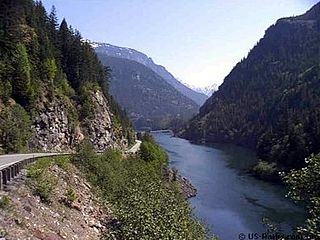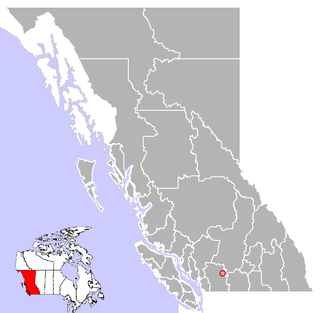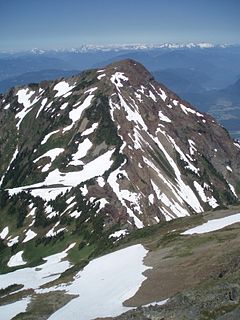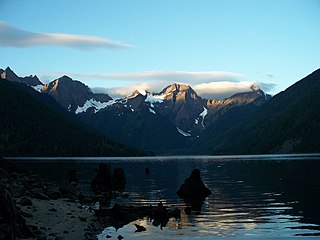The Sumallo River is located in southern British Columbia, in the Cascade Mountains to the east of Hope. [1] It begins on the east slopes of Mount Payne, [2] south of the village of Sunshine Valley. It flows north until it reaches Sunshine Valley where it turns southeast and proceeds into Manning Park. It continues southeast within the park, running alongside Highway 3 before eventually meeting the Skagit River at the northern boundary of Skagit Valley Provincial Park, to the northeast of Marmot Mountain.

British Columbia is the westernmost province of Canada, located between the Pacific Ocean and the Rocky Mountains. With an estimated population of 5.016 million as of 2018, it is Canada's third-most populous province.

Hope is a commuter town and district municipality at the confluence of the Fraser and Coquihalla rivers in the province of British Columbia, Canada. Hope is at the eastern end of both the Fraser Valley and the Lower Mainland region, and is at the southern end of the Fraser Canyon. To the east over the Cascade Mountains is the Interior region, beginning with the Similkameen Country on the farther side of the Allison Pass in Manning Park. Located 154 kilometres (96 mi) east of Vancouver, Hope is at the southern terminus of the Coquihalla Highway and the western terminus of the Crowsnest Highway, locally known as the Hope-Princeton, where they merge with the Trans-Canada Highway. Hope is at the eastern terminus of Highway 7. As it lies at the eastern end of the Fraser Valley in the windward Cascade foothills, the town gets very high amounts of rain and cloud cover – particularly throughout the autumn and winter.

Sunshine Valley, formerly named Tashme, is an unincorporated settlement and former Japanese Canadian internment camp on the Crowsnest Highway between of the town of Hope (NW) and the entrance to Manning Park in the Cascade Mountains of British Columbia. Located just outside the 100 mile "quarantine" zone from which all Japanese Canadians were removed during World War II, it was a large camp housing 2400 people on the site of a former Depression-era Relief Workers' Camp. Men housed in the camp were employed in the construction of the highway during the war. After the war, the site was sold off and has continued in existence as a proposed Boy's Town, the Allison Lumber Company and then a small campground and recreational community, and served as the basetown for the small Silvertip Ski Area which was located at the head of Tearse Creek, a tributary of the Upper Sumallo River which flows north into the town from the south & upon entering the town, turns southeast & enters Manning Park. In Hope, there is a Tashme Friendship Garden in memory of the camp and its residents.
The name comes from the word Semall-á-ow given to Alexander Caulfield Anderson by his Nlaka'pamux guide on an 1846 journey through the North Cascades. This word is not from the Halkomelem language from local Sto:lo people, so it may be a Nlaka'pamuctsin (Thompson) word. [3]

Alexander Caulfield Anderson was a Hudson's Bay Company fur-trader, explorer of British Columbia and civil servant.

The Nlaka'pamux or Nlakapamuk, also previously known as the Thompson, Thompson River Salish, Thompson Salish, Thompson River Indians or Thompson River people, and historically as the Klackarpun, Haukamaugh, Knife Indians and Couteau Indians, are an indigenous First Nations people of the Interior Salish language group in southern British Columbia. Their traditional territory includes parts of the North Cascades region of Washington.
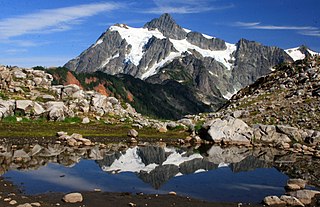
The North Cascades are a section of the Cascade Range of western North America. They span the border between the Canadian province of British Columbia and the U.S. state of Washington and are officially named in the U.S. and Canada as the Cascade Mountains. The portion in Canada is known to Americans as the Canadian Cascades, a designation that also includes the mountains above the east bank of the Fraser Canyon as far north as the town of Lytton, at the confluence of the Thompson and Fraser Rivers.
